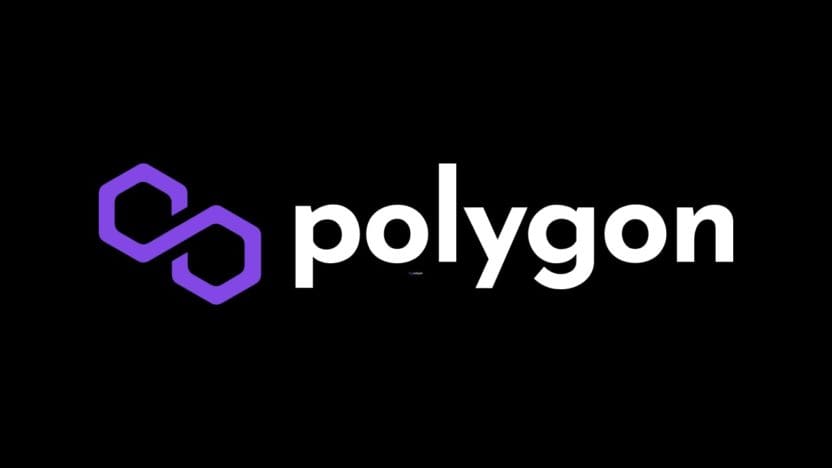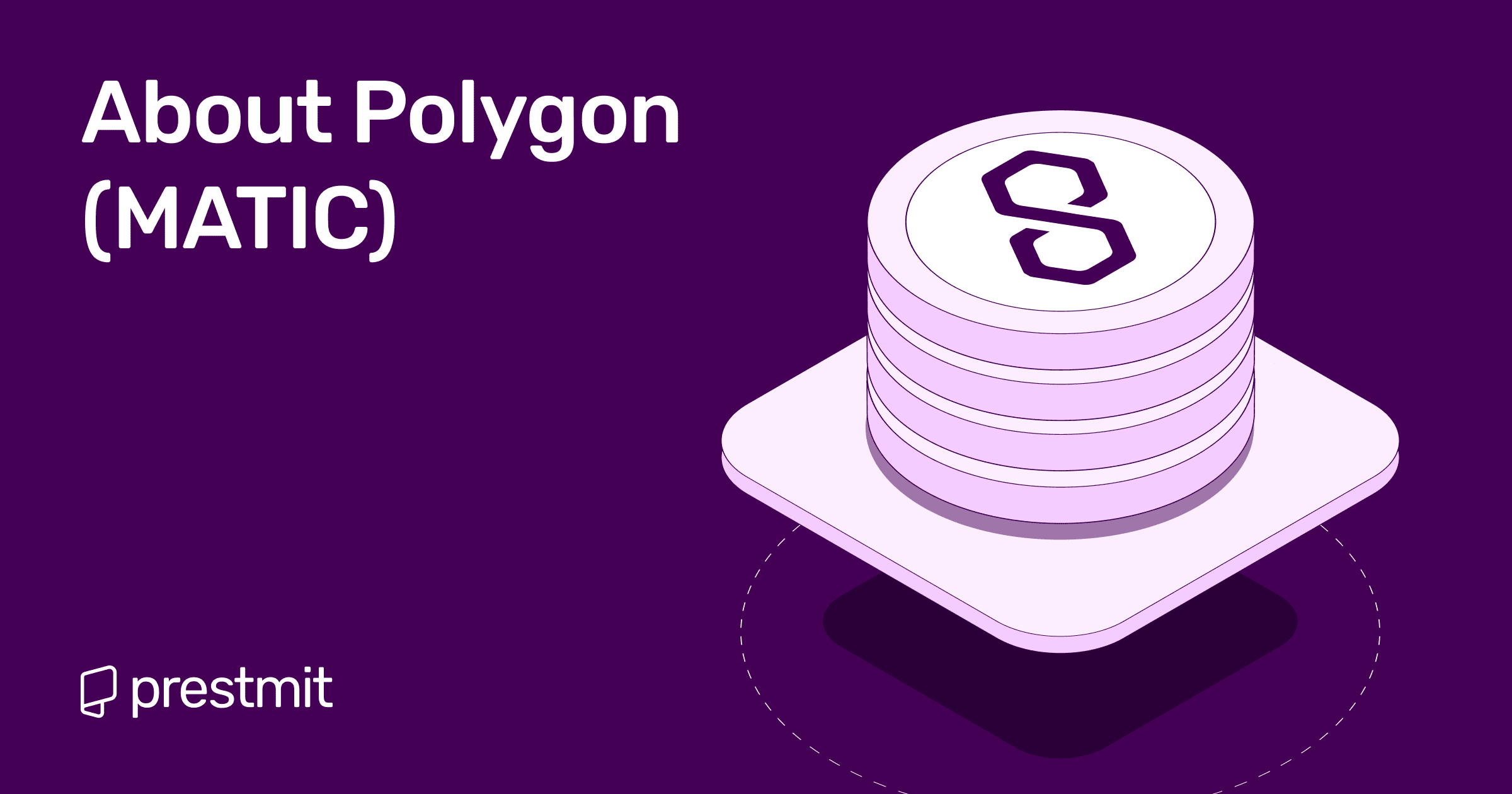Table of Contents
Did you know that Polygon (MATIC) ranks among the top cryptocurrencies? This positions it as one of the most influential projects in the blockchain industry. Built as a major Layer-2 solution for Ethereum, Polygon was created to address the long-standing issues that limit the adoption of blockchain technology.
What makes Polygon stand out is its ability to provide faster and cheaper transactions while being fully compatible with the Ethereum ecosystem. Developers can build decentralized applications on Polygon without sacrificing the decentralization and security that Ethereum is known for.
In just a few years, Polygon has grown into a significant piece of blockchain powering DeFi protocols, NFT platforms, gaming ecosystems, and even enterprise solutions. Its promise of efficiency, and affordability has attracted both developers and investors making it a key driver in the push toward mass adoption of Web3.
But that is not all, in this piece, we will explore every other thing you need to know about Polygon (MATIC) tokens.
What is Polygon (MATIC)?

Polygon is a Layer-2 scaling solution built to improve the performance of the Ethereum blockchain. While Ethereum remains the most widely used platform for decentralized applications, it struggles with congestion that leads to slow transactions and high gas fees. Polygon solves this by creating a multi-chain framework that allows developers to build and connect scalable Ethereum-compatible blockchains. In simple terms, it makes Ethereum faster and more affordable without compromising on security.
MATIC, its native cryptocurrency token, serves several purposes. It is used to pay for transaction fees, secure the network through staking, and also participate in its governance. By staking MATIC, token holders help validate transactions and maintain the integrity of the blockchain while the latter allows them to vote on proposals that shape Polygon futures.
Also, the role of Polygon to Ethereum is crucial. It addresses the Ethereum scalability problem, one of the biggest obstacles to mainstream blockchain adoption. This efficiency made Polygon one of the most trusted platforms for DeFi, NFTs, and enterprise blockchain projects positioning it as a vital asset to the next phase of Web3 growth.
How Does Polygon Work?
Polygon is designed to extend Ethereum’s capabilities without replacing it. Instead of building a separate blockchain, Polygon operates as a framework that connects multiple scaling solutions under one.
Polygon achieves this through its Proof-of-Stake (PoS) chain and other scaling technologies. On the PoS chain, validators use MATIC tokens to confirm transactions quickly and securely.
Polygon also makes use of “Plasma chains” which bundle many smaller transactions together before sending them back to Ethereum. This approach increases the number of transactions the network can handle while keeping fees very low.
Another thing that makes Polygon powerful is its relationship with Ethereum. Most of the heavy work happens on Polygon but the final records are still anchored to the Ethereum mainnet. This means users and developers enjoy speed and affordability without losing Ethereum’s strong security.
In short, Polygon makes Ethereum more usable by turning a congested blockchain into a smooth network that can handle real-world demand for DeFi apps, NFT trading, gaming, and more.
Key Features of Polygon
Polygon has grown into one of the most widely used blockchain platforms because of its unique features that set it apart from other scaling solutions. Here are the core strengths that make polygons stand out.
1. Multi-Chain Support with Ethereum Compatibility
One of Polygon’s biggest strengths is its ability to support multiple blockchains within a single framework. Developers can create their own customized blockchains sometimes called “sidechains” and can still connect them to Ethereum. This makes Polygon an ideal choice for building dApps that require high performance but still want to remain tied to Ethereum.
2. Proof of Stake (PoS) Consensus Mechanism
Instead of relying on the energy-heavy process of mining, Polygon uses a Proof-of-Stake consensus system. Here validators secure the network by staking MATIC tokens. In return, they earn rewards for confirming transactions and ensuring the blockchain remains safe and reliable. This system is not only eco-friendly but also ensures faster transaction processing.
3. High-speed, Low Cost Transactions
Polygon can handle thousands of transactions per second compared to Ethereum’s limited throughput of around 15-30 transactions per second. This massive improvement in scalability allows users to complete transfers, interact with dApps, or trade NFTs almost instantly. On top of this, fees are dramatically lower. Transactions that might cost several dollars on Ethereum can cost just a few cents on Polygon.
4. Strong Developer Ecosystem and dApp Integration
Polygon is highly attractive to developers because it is fully compatible with Ethereum tools and programming languages such as Solidity. This means that any application built for Ethereum can easily migrate to Polygon without needing to be rewritten from scratch. As a result, thousands of decentralized applications already run on Polygon, covering areas like decentralized finance, digital collectibles, gaming, and enterprise solutions.
Use Cases of Polygon

Here are the main areas where Polygon is making an impact that have made it one of the most widely adopted platforms in the blockchain ecosystem.
1. Decentralized Finance (Defi) Platforms
DeFi is one of Polygon’s strongest areas of adoption. Many decentralized exchanges, lending platforms, and yield farming protocols run on Polygon because of its ability to process transactions quickly and cheaply. For example, Aave, one of the largest lending platforms, has deployed on Polygon to give users lower-cost access to borrowing and lending. Similarly, decentralized exchanges like QuickSwap allow users to trade tokens with minimal fees, making DeFi more accessible to everyday users.
2. NFTs and Gaming Projects
High transaction costs on Ethereum have often made NFT trading expensive but Polygon has provided a cost-effective alternative. Popular NFT marketplaces such as OpenSea integrated Polygon to give users the option of minting and trading NFTs at a fraction of Ethereum gas fees. In the gaming sector, projects like Decentraland and The Sandbox have also tapped into Polygon’s scalability to handle in-game transactions and digital asset trading to ensure a smoother gameplay experience and more affordable interactions.
3. Real World Examples Across Industries
Polygon’s growing list of partnerships and integrations showcases its wide range of use. From powering decentralized identity solutions like Polygon ID, to supporting environmentally friendly initiatives such as carbon platforms, Polygon is being used in areas that go far beyond crypto trading. Its combination of speed, affordability, and Ethereum compatibility positions it as a go-to infrastructure for building the next wave of blockchain applications.
Advantages of Polygon
If you are wondering what the merits of Polygon are, here are some of the advantages that make it appealing to developers, businesses, and everyday users alike.
1. Lower Gas Fees Compared to Ethereum
One of the most attractive benefits of Polygon is its affordability. On Ethereum, gas fees can sometimes cost more than the transaction itself, especially during peak network activity. Polygon dramatically reduces these costs, bringing fees down to just a few cents. This affordability makes decentralized applications such as lending, trading, or NFT minting accessible to a much wider audience.
2. Fast Transaction Processing
Polygon’s architecture is designed for speed. While Ethereum processes around 15-30 transactions per second, Polygon is capable of handling thousands. This high throughput ensures that users experience near instant confirmation times which is critical for applications like gaming, decentralized exchanges, and real-time financial services.
3. Security Through Ethereum Integration
Unlike many standalone blockchains, Polygon doesn’t sacrifice speed. Transactions processed on Polygon are regularly anchored back to the Ethereum mainnet which acts as the ultimate layer of trust. This means users enjoy fast and low transactions while still relying on Ethereum’s robust decentralization and security guarantees.
4. Strong Partnership and Growing Ecosystem
Polycon’s success is also tied to its expanding network of partners and integrations. Major companies like Meta (Instagram), Adobe, and Starbucks have adopted Polygon for NFTs and digital collectibles. At the same time, leading DeFi platforms such as Aave and Curve Finance have launched on Polygon to tap into its scalability. This growing ecosystem creates a virtuous cycle, more projects attract more users which in turn draws more developers and enterprises to the network.
Polygon vs Ethereum
Since Polygon was designed as a scaling solution for Ethereum, it is important to understand how the two compare. Both serve critical roles in the blockchain ecosystem but differ significantly in speed, cost, and scalability.
1. Speed and Scalability
Ethereum can process only about 15-30 transactions per second which often leads to network congestion during periods of high activity. This limitation slows down dApps and makes real-time interactions such as trading and gaming less efficient. Polygon on the other hand is capable of handling thousands of transactions per second due to its Proof-of-Stake (Pos) chain and sidechain. This makes Polygon more suitable for applications that require fast and frequent transactions.
2. Transaction Costs
High gas fees have long been a point for Ethereum users. Simple actions like transferring tokens or minting an NFT can sometimes cost several dollars or even more when the network is busy. Polygon solves this by offering extremely low fees, usually a few cents per transaction.
3. Ethereum Congestion Vs Polygon Efficiency
Ethereum’s popularity has both its strengths and its challenges. While it is the most secure and widely used smart contract platform, its congestion limits its usability for everyday interactions. Polygon was created to absorb this pressure by processing transactions off-chain and settling them on Ethereum later. In doing so, it acts as an Ethereum efficiency layer relieving congestion while keeping transactions tied to Ethereum security.
4. The Long-term Role of Polygon Alongside Ethereum 2.0
With the Launch of Ethereum 2.0, some have questioned Polygon’s future role. However, Polygon is not a competitor to Ethereum but rather a complementary solution. Even with Ethereum 2.0, demand for blockchain space is expected to remain high. Polygon provides additional scaling options, specialized chains, and tools that continue to enhance Ethereum’s ecosystem.
5. Why Developers and Users Choose Polygon
For developers, Polygon offers the familiarity of Ethereum tools while solving its performance challenges. They can build dApps without worrying about high cost or slow transactions. For users, the benefits are equally clear – faster interactions, cheaper fees, and access to the growing ecosystem of Defi, NFT, and Web3 applications.
Frequently Asked Questions about Polygon (MATIC) Token
Is Polygon the same as MATIC?
Polygon is the scaling blockchain network and MATIC is its token. The token is used for transaction fee payments, staking, and governance.
What are the potential dangers of using Polygon?
As with every blockchain, Polygon is vulnerable to potential threats of bugs in smart contracts, validator misbehavior, or overall market volatility on the MATIC token. However, its strong ties to Ethereum and active developer community help alleviate many of those issues.
Is Polygon likely to be better than Ethereum?
Polygon is not intended to compete with Ethereum but supports it. Ethereum provides the security and decentralization foundation, while Polygon contributes speed and affordability.
Where can I buy MATIC tokens?
MATIC tokens are available on most prominent cryptocurrency exchanges. After purchasing, you can store them in a crypto wallet such as MetaMask or stake them in full on Polygon-enabled platforms.
Is Polygon (MATIC) a good investment?
Polygon’s robust ecosystem, low fees, and high rate of adoption establish it as one of the top blockchain projects. Nevertheless, as with all cryptocurrencies, MATIC is susceptible to volatility and market risk.
Conclusion
Polygon (MATIC) has established itself as one of the leading Layer-2 solutions for Ethereum, solving most of the problems that have held back blockchain adoption. With faster transactions at a fraction of the cost, it has become a pillar of the Web3 economy, powering DeFi platforms, NFT marketplaces, gaming projects, and corporate use cases
Its ability to balance scalability with Ethereum’s robust security places Polygon as a necessary bridge between the current limitations of blockchain and the future of mass adoption. With that aside, as is the case with all cryptocurrencies, there are dangers in investing in MATIC. If you are considering buying or staking the token, ensure to research properly, be mindful of market fluctuations, and invest only what you are willing to lose.
Last updated on September 12, 2025

